The painted Dala horse is a Swedish icon. During a visit to the Dalarna province, we learned about its history and how it is made today.
Disclosure: We were the guests of Visit Dalarna, Solgårdskrogen, and Karl Tövåsen’s fäbod as part of a larger press trip with TBEX.

Chances are when you see a gaily painted red wooden horse, you know that it’s from Sweden. During a recent visit to the Dalarna province of central Sweden, we looked forward to learning more about the Dala horse, and seeing how it was made.
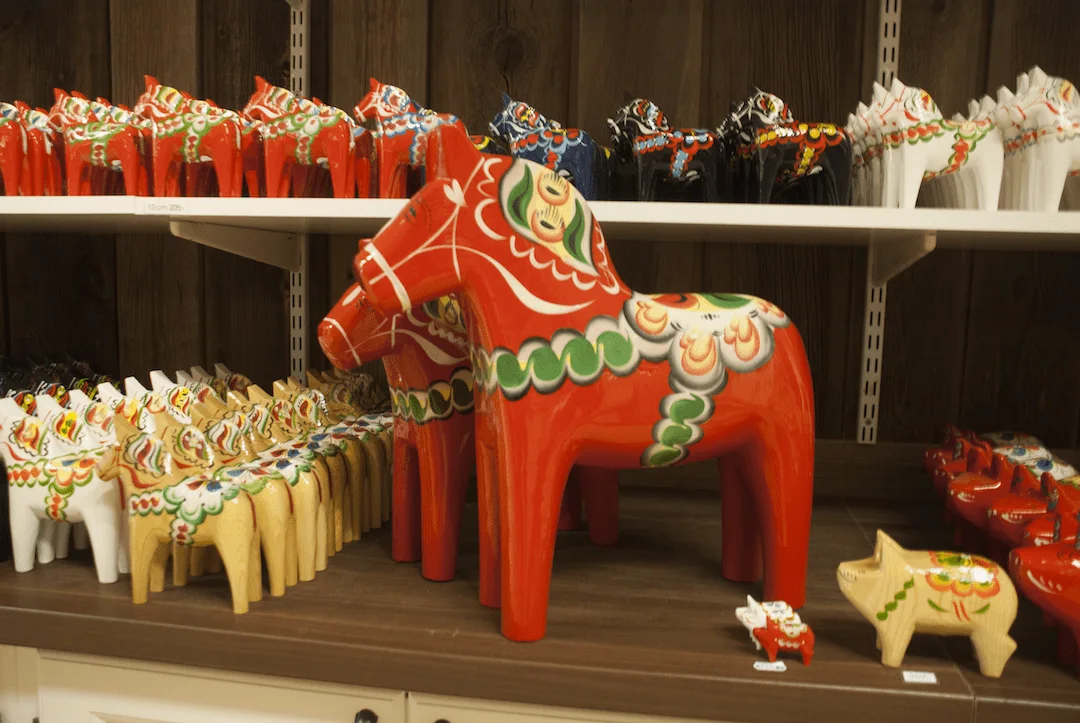
The Dala horse, symbolic of Sweden
The Dala horse can be found throughout our home state of Minnesota
We’re from Minnesota, where numerous Swedes settled and the culture lives on. The Dala horse, a symbol synonymous with Sweden, is everywhere. Mora, after the Dalarna town of the same name, has a giant-sized Dala horse statue. The Swedish immigrant heritage Gammelgården Open Air Museum in Scandia displays antique Dala horses, and the American Swedish Institute in Minneapolis does, too. Dala horses are for sale in Scandinavian gift shops throughout the state.
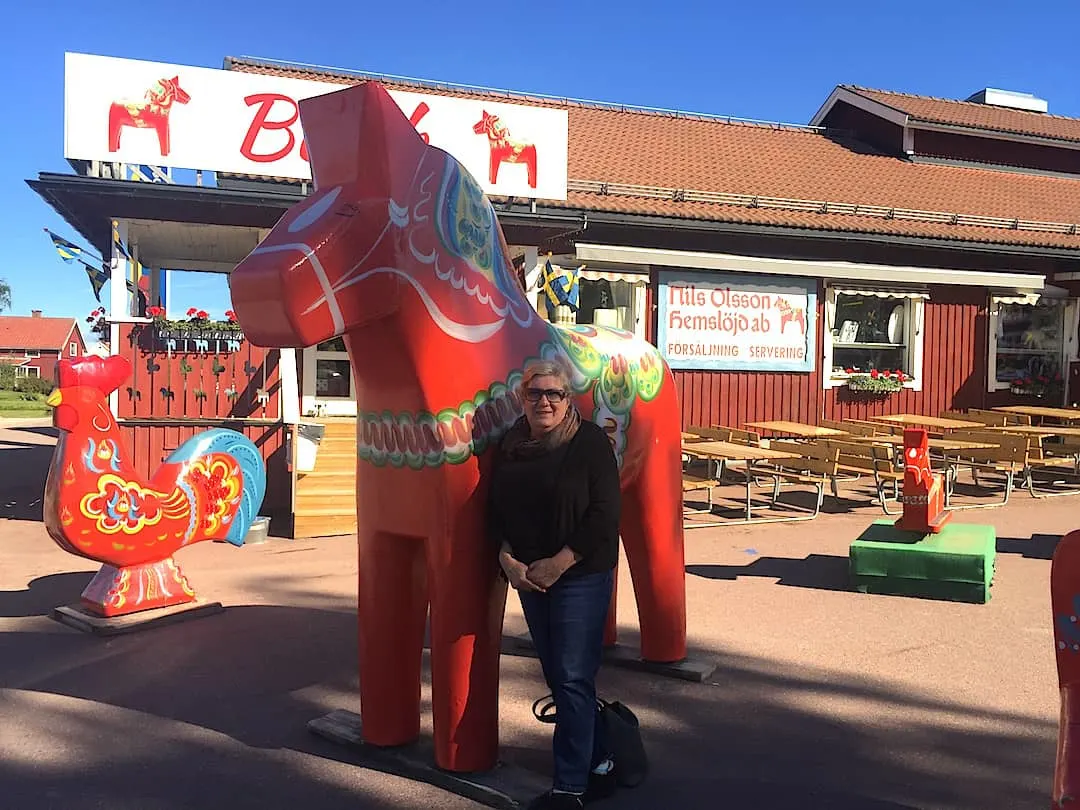
The Dala horse has a rich historical tradition
The Dala horse tradition may go back as far as the 15th century. Foresters in central Swedish villages would carve toy horses for their children during long winter evenings by the fire. Carpenters and woodworkers have long used the slow-growth pine from forests around Lake Siljan in Dalarna. Perhaps furniture and clock producing village whittlers here produced the horses from leftover wood scraps.
![Dala Horse: A Painted Swedish Icon 4 Antique Dala Horse. Photo Credit: Jerry MagnuM Porsbjer (www.magnumphoto.se) [GFDL (https://www.gnu.org/copyleft/fdl.html) or CC BY-SA 3.0 (https://creativecommons.org/licenses/by-sa/3.0)], via Wikimedia Commons](https://passingthru.com/wp-content/uploads/2016/09/dalahast.jpg.webp)
Antique Dala Horse. Photo Credit: Jerry MagnuM Porsbjer (www.magnumphoto.se) [GFDL (https://www.gnu.org/copyleft/fdl.html) or CC BY-SA 3.0 (https://creativecommons.org/licenses/by-sa/3.0)], via Wikimedia Commons
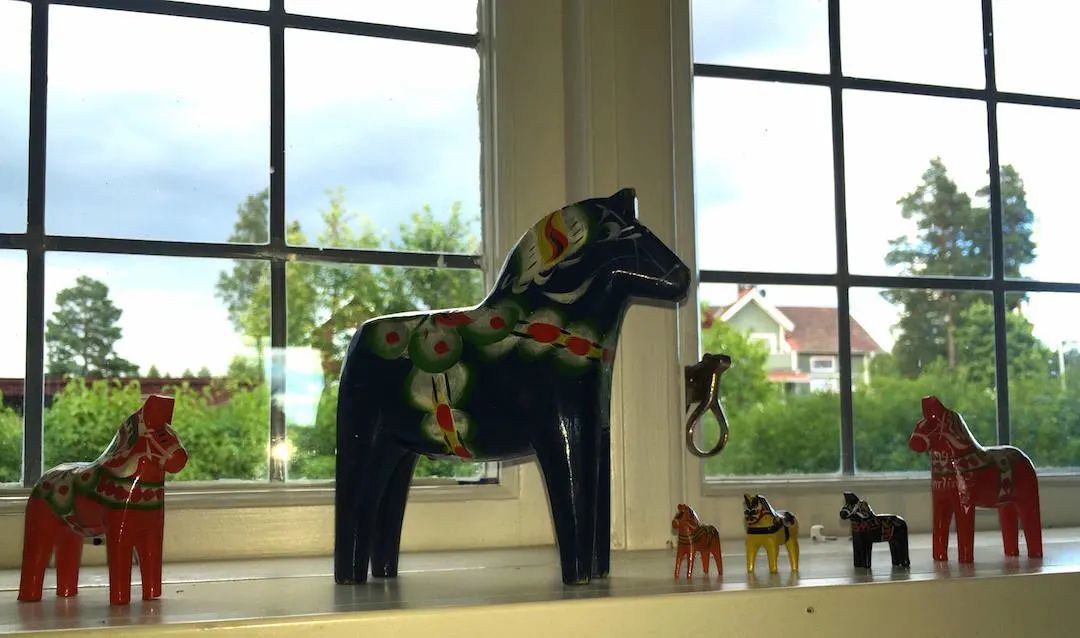
Multi-colored Dala horses in a window of our Swedish guesthouse
In 1928, young teenage brothers Nils and Jannes Olsson used a hand-pulled band saw to begin higher volume production from their mother’s baking shed in the village of Nusnäs. The Nusnäs version of the Dala horse evolved with thick legs and neck. This shape was more easily derived from mass cut blanks, as opposed to more graceful versions produced in Rättvik and elsewhere.

Images Credit: woodenhorsemuseum.se
The Dala horse became a Swedish icon in the 20th century
The 13 and 15-year-old Olsson brothers had great timing. After being featured in the Paris World’s Expo in 1937 and the New York World’s Fair in 1939, the Dala horse became Sweden’s most recognized emblem. Global demand began to grow, and sales increased sharply after World War II. Today, about 250,000 horses are produced out of two factories in Nusnäs.
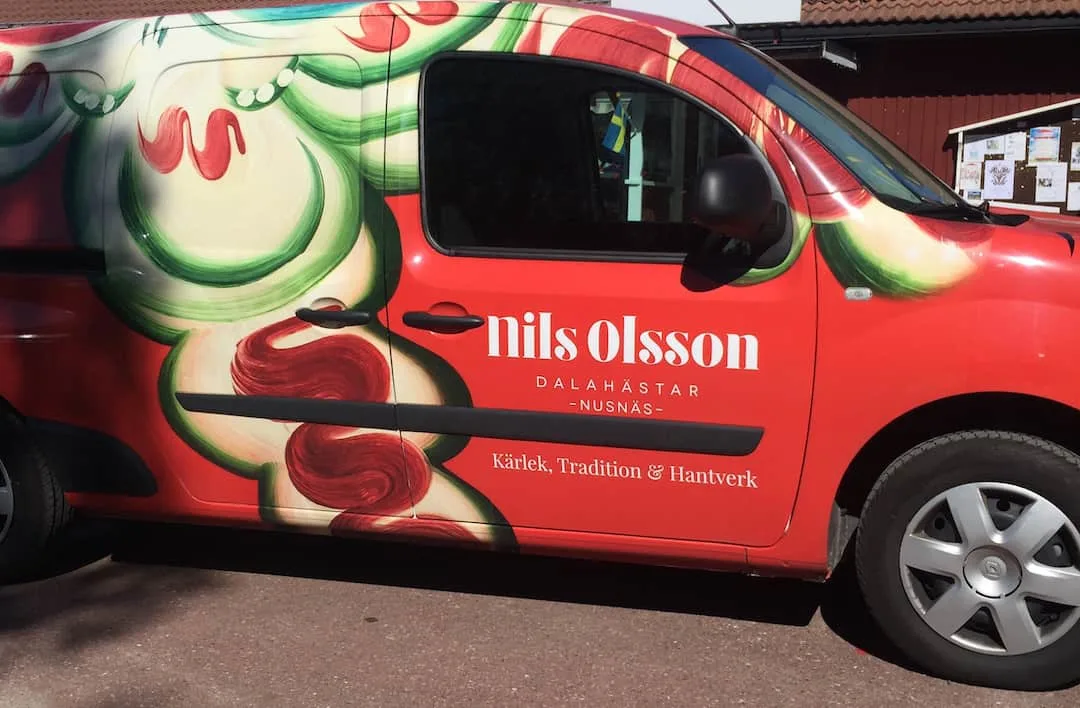
Nowadays, the traditional Dala horse is still produced primarily by hand. In winter, 50 to 60 freelance carvers work to shape the Dala horses from home using machine cut blanks for the Olsson facility.
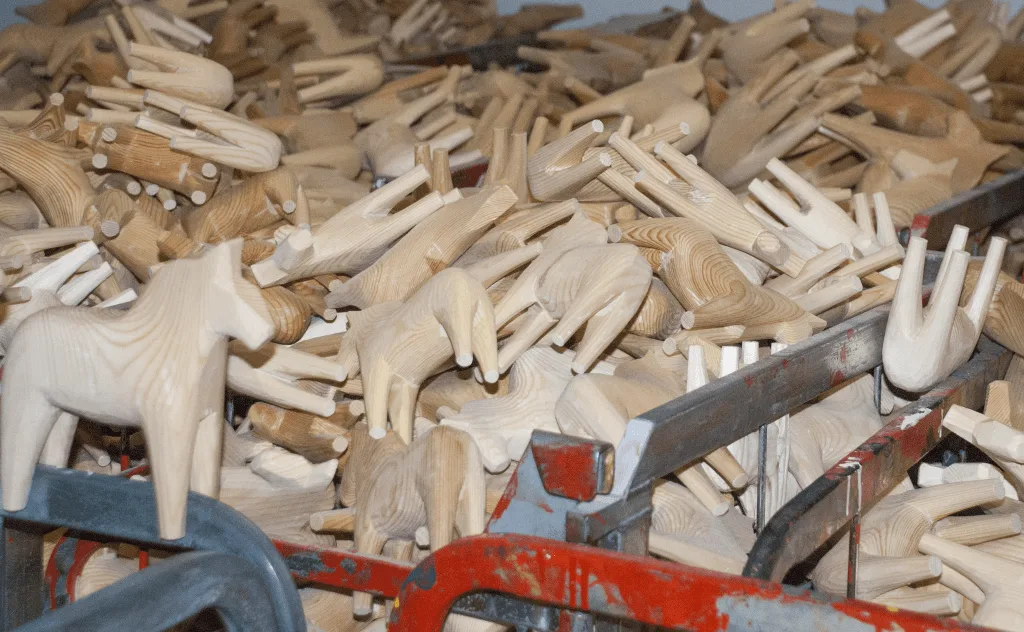
Dala horses back from the carvers
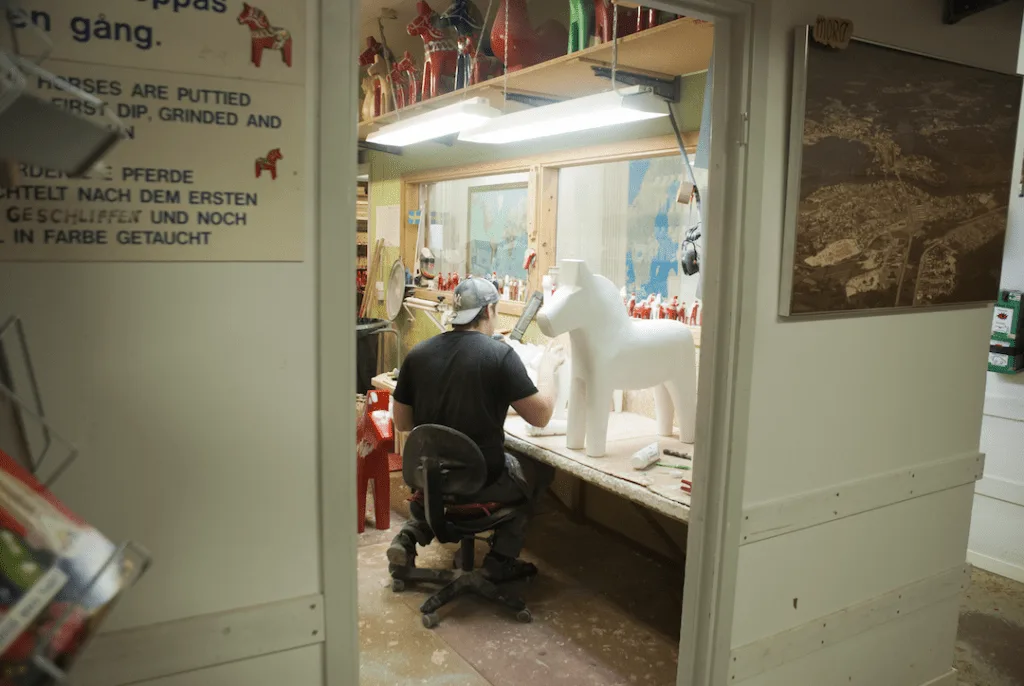
Working on a large Dala horse
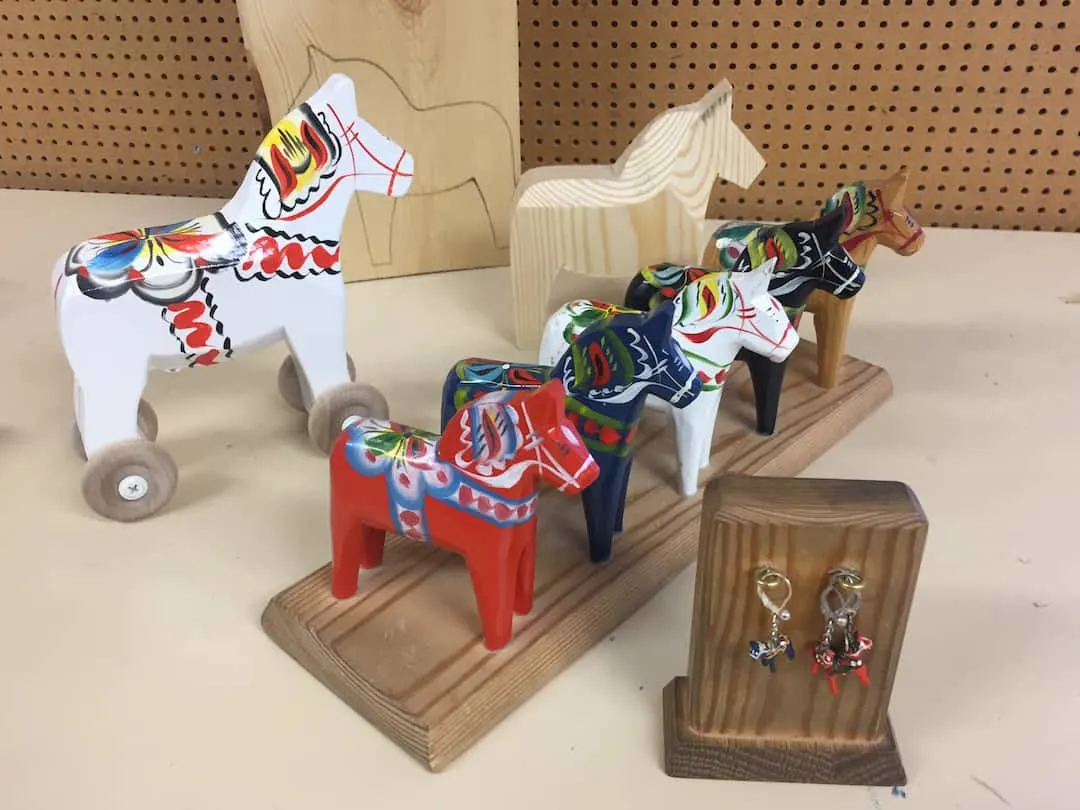
The factory’s experienced painters customize traditional motifs and mix their own paint combinations.
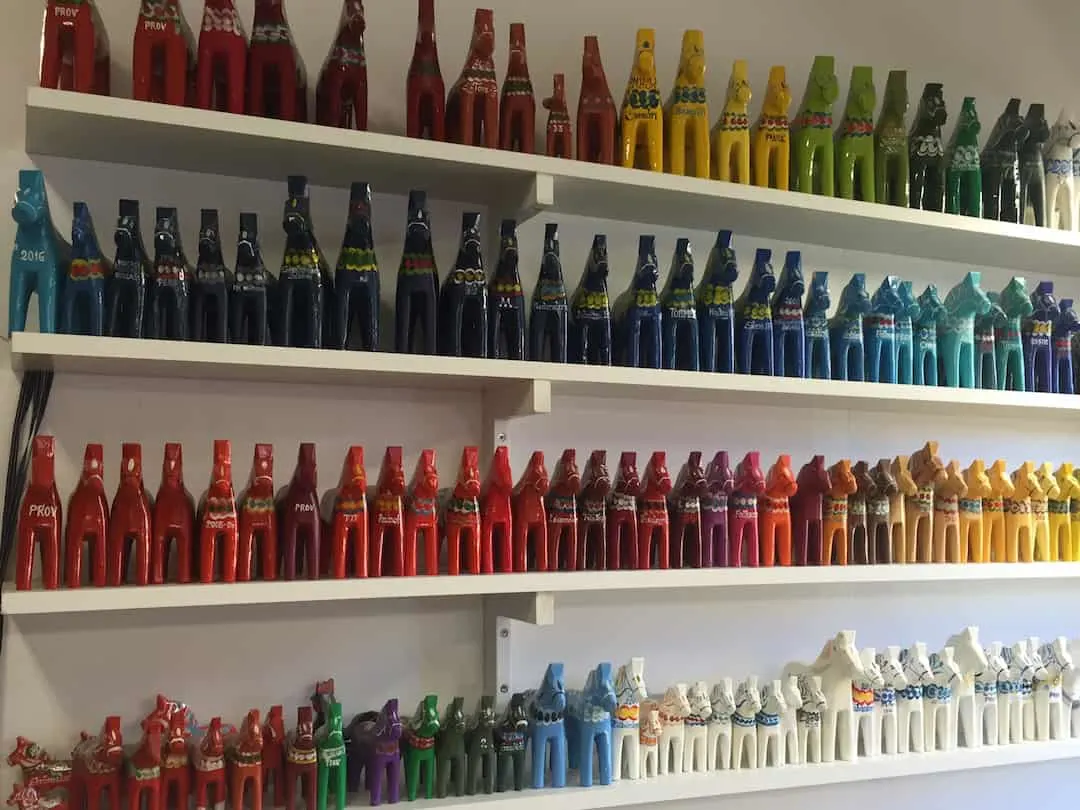
These ladies work deftly, producing about 100 horses per day. It is not as easy as it may seem! Check out the video of our visit where Betsy got to try for herself! (Click here for YouTube version).
Tips and Practicalities:
The Nils Olsson factory is located in the little village of Nusnäs, off Highway 70 on the northeast shore of Lake Siljan between Mora and Rättvik in the province of Dalarna, Sweden. Tel. 0250-372-00. The factory is open from 8am to 3:30pm Monday through Friday, the store is open weekdays 9am to 4pm, weekends from 10am – 3pm. You may paint your own horse on weekends from 10am – 3pm.
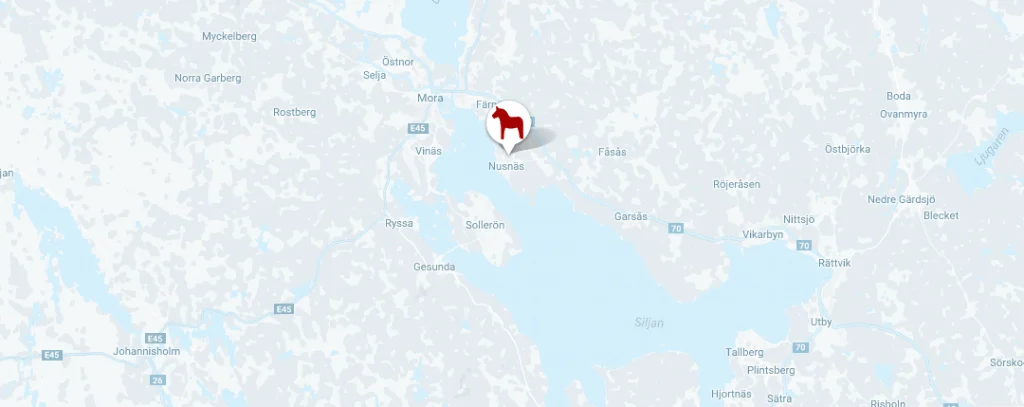
Courtesy of Nils Olsson Dalahästar
Train travelers can travel and book with SJ Railways from Stockholm. Take the SJ InterCity Train 42 to Mora, which departs at 9:45am on weekdays. Change at the Mora station to the Dalatrafik Bus 324 for a 15 minute ride to Nusnäs. As of this writing, combination 2nd class fares began at 319SEK (just over $37USD).
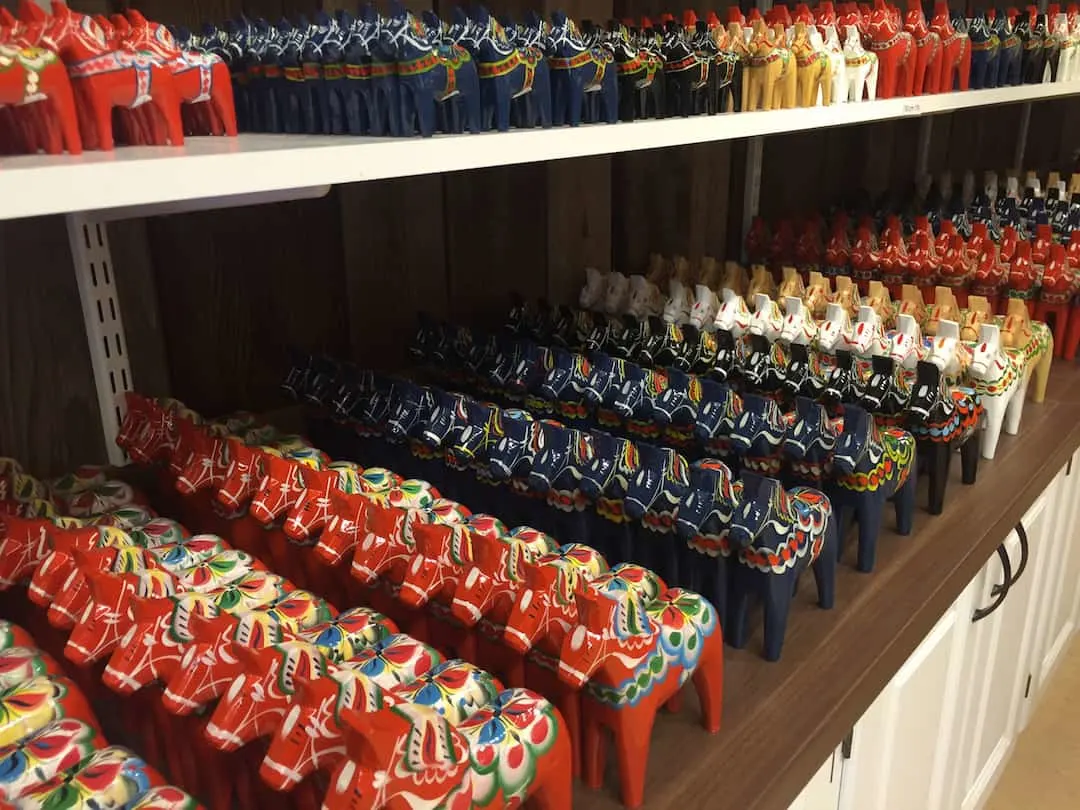
Pinnable Image:
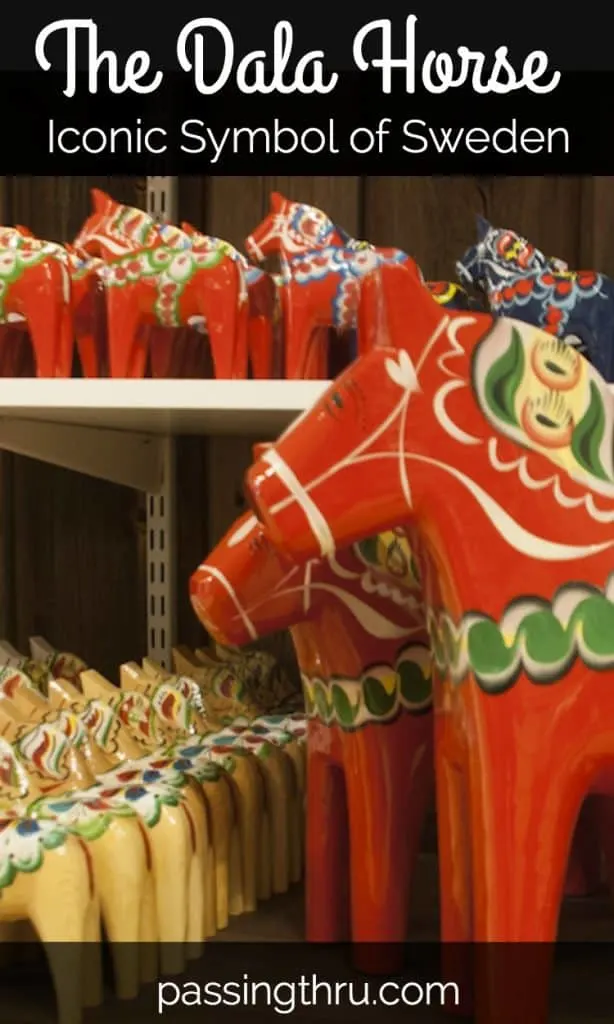
Disclosure: Our visit to the Nils Olsson Dala horse factory in Nusnäs was part of a lengthier press trip with Visit Sweden and Visit Dalarna in conjunction with TBEX.
Tips for Trip Success
Book Your Flight
Find an inexpensive flight by using Kayak, a favorite of ours because it regularly returns less expensive flight options from a variety of airlines.
Book Your Hotel or Special Accommodation
We are big fans of Booking.com. We like their review system and photos. If we want to see more reviews and additional booking options, we go to Expedia.
You Need Travel Insurance!
Good travel insurance means having total peace of mind. Travel insurance protects you when your medical insurance often will not and better than what you get from your credit card. It will provide comprehensive coverage should you need medical treatment or return to the United States, compensation for trip interruption, baggage loss, and other situations.Find the Perfect Insurance Plan for Your Trip
PassingThru is a participant in the Amazon Services LLC Associates Program. As an Amazon Associate I earn from qualifying purchases.
To view PassingThru’s privacy policy, click here.

kathy weber
Tuesday 20th of September 2016
Great story. I am sharing this with my granddaughter. She loves everything about horses and is quite artsy. Looks like you had fun also.
Betsy Wuebker
Tuesday 20th of September 2016
Hi Kathy - We did have fun! Thanks for sharing!
Jordana
Monday 19th of September 2016
Loved this post - I love that these beautiful little horses are hand painted (and hand carved) - I have a girlfriend with one of these on her bookshelf in her office and always meant to ask her the significance. And Betsy, I think you'd do just fine as a custom painter xo
Betsy Wuebker
Monday 19th of September 2016
Hi Jordana - Aww, you're so sweet. I just can't understand why they haven't called! ????
Natasha Amar
Monday 19th of September 2016
What a fascinating story. The Dalarna horse is beautiful and it's interesting to know it was even used for barter in the old days.
Betsy Wuebker
Monday 19th of September 2016
Hi Natasha - Yes, that's a fascinating detail, isn't it? Thanks!